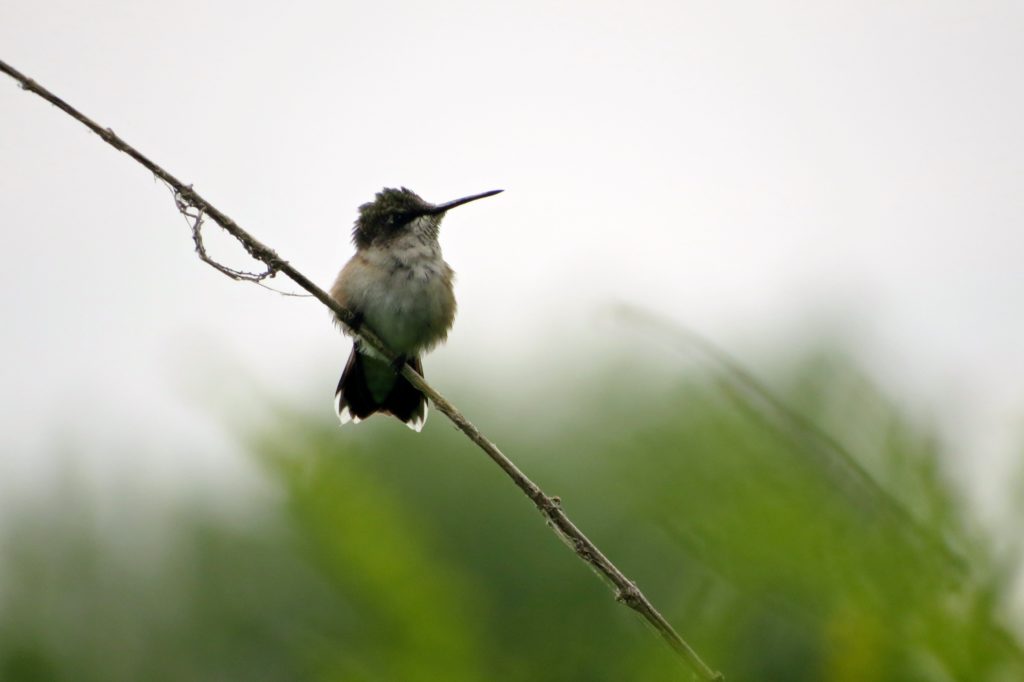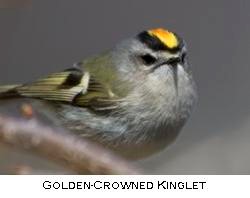This fall can be so relaxing and rewarding in our yards because of the changing bird activity. At our Wild Birds Unlimited in Grosse Pointe Woods, we are hearing from customers that they are seeing a good number of Ruby-throated Hummingbirds, visiting both flowers and hummingbird feeders. This is their time of year to fatten up before they make their way back to Mexico or in some cases, as far south as Costa Rica. Hummingbird feeders should be kept up through mid-October in Michigan, the latest date that we get reports of these birds.

Ruby-throated Hummingbird by Andrea Rose
Goldfinch numbers also swell as youngsters accompany their parents, making their presence known by the constant “chippee, chippee”, their begging call for food. In many yards, finch feeders have every perch occupied with a Goldfinch. In the tall coreopsis and the woodland sunflower that grow in my yard, the Goldfinches gather by the dozens to gorge themselves on the bounty of seeds that are now available on these flowers.
Blue Jay vocalizations are also more prevalent as they begin their southward journey. I always hope that a few will decide to make my yard a part of their winter habitat. Just the opposite of the increasing Blue Jay screams, most of the resident birds have become silent. The Cardinal still sings early in the morning, but only then. No more days filled with the songs of the Robins, interspersed with the “coo” of the Mourning Dove and the “fee-bee” of the Chickadee. The Chickadees are still vocal but in a different way. Their territorial call has been replaced with contact calls. Now we hear “dee-dee” or “chickadee”, which are both sounds Chickadees use to let the rest of the flock know their whereabouts.
One bird that has a significant increase in numbers is the House Sparrow. Every day we hear from customers that they have huge clouds of House Sparrows descending on every bird feeder available. Surely, this is one of the most successful breeders that we have locally. At least other birds notice the sparrow activity, so perhaps some seed eating migrants will see the crowd and join in as they migrate through the area. This is also the time of the year to look for Eastern Towhees and White-throated Sparrows. Some customers of WBU GPW have reported Rose-breasted Grosbeaks at their seed feeders, always a welcome visitor.

There have also been a number of warblers visiting yards. Watch for them gleaning insects from the evergreens and deciduous trees. We’ve had Wilson’s Warbler and American Redstart eating insects as well as visiting the birdbath – the noise of dripping water gets them every time. Other insect eating birds that we may see in our yards include the Ruby-crowned Kinglet and the Golden-crowned Kinglet, both of which flit about in a way that makes you believe they are spending more energy than they are getting from the insects they are gleaning from trees.
At dusk, some of us may live in an area where we can watch the spectacle of blackbirds gathering in large flocks. These flocks are comprised of Red-winged Blackbirds, Grackles and Cowbirds. They usually choose large trees as a roosting area for the night. It can be interesting to watch them as they drop into the trees and then listen to their version of a nighttime lullaby, which our human ears hear as squawking and screeching.
Take the time to watch for new birds of fall migration, as well as seeing our resident birds settle into fall flocks and fatten up after a hectic summer of breeding. You never know what you might see.
Enjoy your birds!
Rosann
Wild Birds Unlimited of Grosse Pointe Woods, MI
Have you joined our email list? Click here to sign up, it’s free and gives you access to sales, coupons, nature news, events, and more!
